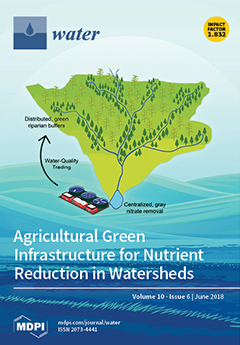1
Unité Mixte de Recherche (UMR, Lab) Patrimoines Locaux et Gouvernance (PALOC) Institut de Recherche pour le Développement (IRD)/Muséum National d’Histoire Naturelle (MNHN), Laboratoire Mixte International (LMI) Patrimoines et Territoires de l’Eau(PATEO), IRD Hann, BP 1386, 18524 Dakar, Senegal
2
Centre National de Recherches Météorologiques (CNRM), UMR 3589, Centre National de la Recherche Scientifique (CNRS)/Météo-France, 31057 Toulouse, France
3
UMR Géosciences Environnement Toulouse (GET) CNRS/IRD, Observatoire Midi-Pyrénées (OMP), 31400 Toulouse, France
4
Social and Economic Survey Research Institute (SESRI), Qatar University, Al Dafna. P.O. Box 2713, Doha, Qatar
5
Institut des Géosciences et Environnement (IGE) CNRS/IRD/Université Grenoble-Alpes (UGA)/Grenoble Institut National Polytechnique (GINP), Observatoire des Sciences de l’Univers de Grenoble (OSUG), 38400 Grenoble, France
6
UMR Hydro-Sciences Montpellier (HSM) IRD/Université de Montpellier (UM), 34000 Montpellier, France
7
Direction de la Gestion et de la Planification des Ressources en Eau (DGPRE), BP 14484, 18524 Dakar, Senegal
8
Department of Geography, Zinder University, BP 656, Zinder, Niger
9
Agence Nationale de l’Aviation Civile et de la Météorologie (ANACIM), BP 8184, 18524 Dakar, Senegal
10
Department of Geography, Université Cheikh Anta Diop (UCAD), BP 5005, 18524 Dakar, Senegal
11
UMR ESPACE DEV IRD/Institut de Recherche des Sciences et Technologies de l’Environnement et de l’Agriculture (IRSTEA)/UM, 34000 Montpellier, France
12
Direction Nationale de l’Hydraulique, BP 642, 999049 Conakry, Guinea
13
Coyne et Bellier, Tractebel Engineering France, 92622 Gennevilliers, France
14
Centre de Recherches Hydrologique (CRH) de l’Institut de Recherches Géologiques et Minières (IRGM), BP 4110 Nlongkak, 999108 Yaoundé, Cameroon
15
MEEF Ministère de l’Environnement des Eaux et Forêts/Ministry of Environment, Water and Forests, BP 761, 999049 Conakry, Guinea
add
Show full affiliation list
remove
Hide full affiliation list





